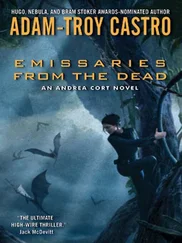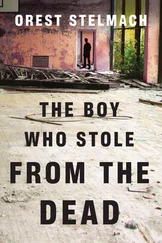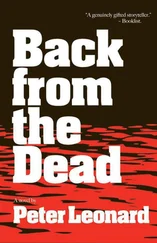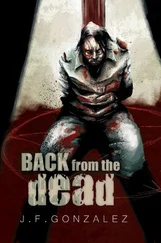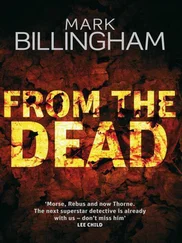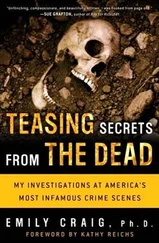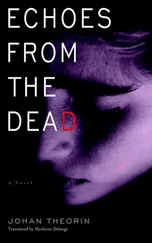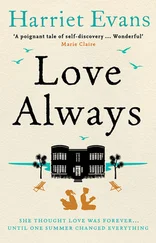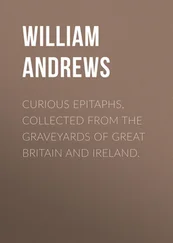The police and sheriff's men had finished documenting the scene and were now fanning out across the surrounding field, searching for any remaining evidence. I'd finished my work though, so I stripped off my gloves, tore open a package of disinfecting towelettes to wipe my dripping face and hands, and plumped myself down on a clean patch of grass to drink a bottle of cold spring water.
“Well, I'm sorry we had to meet under these circumstances, but I'm sure glad you came down here.” Alan, the coroner, was sitting down beside me.
“Hey, a double homicide after three days on the job-I feel like I've just jumped into the deep end of the pool.”
Alan laughed quietly and handed me a clipboard full of forms.
“You know, Alan,” I said quickly, “this is my first case here in Kentucky. Think you could help me out with the paperwork?”
He grinned. “Don't worry, Doc, we got you covered.” He began to leaf through the pages with me. We continued to talk about the case until Alan asked finally, “So you and Dr. Hunsaker will do the autopsy tomorrow?”
I nodded. “Yes, he and I had better work on this one side by side-if that's okay with you.”
This was all old hat to Alan, but I was still getting used to the Kentucky procedure. Because Kentucky is such a large and rural state, every county has its own elected coroner, who serves as the primary death scene investigator after receiving special training in forensic death investigations. Elected coroners are not usually M.D.s, and even if they are, they don't do the autopsies. Instead, the coroner normally works the crime scene, sending any bodies that need autopsies to one of four regional state medical examiner's offices, where forensic pathologists who are M.D.s analyze the body further. The coroner has ultimate responsibility for his or her county, however, authorizing the pathologist to do the autopsy, receiving the final report and, ultimately, issuing the death certificate.
Sometimes the coroner also needs a bone specialist, in which case he or she calls me. I might come out to the crime scene, assist at the autopsy, or take the bones back to my lab in Frankfort. In this case, pathologist Dr. John Hunsaker would be analyzing the bodies' soft tissue while I tried to figure out what had happened to their skulls.
“Any thoughts so far?” Alan asked.
“Well, it's obvious their skulls were shattered,” I said slowly. “But right now I can't tell just how. And I strongly suspect they were dumped here, not killed here.” I was also fairly certain that the victims had died by blunt-force trauma-from being beaten, not shot or stabbed-but I wouldn't really know for sure until I'd had a chance to go back to my laboratory and rebuild the skulls. Since bones break in a fairly predictable manner, rebuilt skulls-or even skull fragments-can often help us figure out what caused the damage. At the very least, we might be able to rule out some potential weapons. Bullet wounds are pretty distinctive, but blunt-force trauma can also leave clues. The round end of a ball-peen hammer, for instance, often leaves a ball-shaped indentation, while a tire iron or the shaft of a golf club tends to leave a long narrow groove.
To get a true picture, though, you need to recover as many skull fragments as you can. Although in this case I'd found lots of loose skull pieces on the ground, I could see that several more fragments were still embedded in the congealed blood and decomposing brain tissue packed within the “brain case,” the cranium. John and I would have to work out a carefully choreographed sequence in tomorrow's autopsy to make sure that neither of us damaged the other's evidence.
For both of us, the maggots were going to be both help and hindrance: a help because they'd enable us to narrow down the postmortem interval, or “time since death”; a hindrance because as long as there were maggots in the body, they'd continue to devour its flesh even if the coroner put the bodies in the morgue cooler.
A maggot mass can take on an astonishing life of its own once it gets established in a carcass. Thousands of maggots can accumulate in a dead victim's chest cavity or pelvis, sort of like a chicken carcass packed tight with lots of creamy overcooked rice. Then the maggots pull together into a cohesive group that churns and boils continually when the air temperature gets too cold for them, as individual maggots try desperately to reach the core for warmth, pushing their hapless neighbors to the periphery-only to be themselves pushed out of the way by yet more desperate maggots. At night or in the morgue cooler, the collective maggot metabolism can be as much as 10 degrees higher than the rest of the body's temperature, so when the body emerges from the fridge, you're likely to see a cloud of steam rising slowly from your homicide victim's collapsed and half-devoured chest.
“Put the bodies in the freezer, not the cooler,” I told the men. Most maggots can survive those sub-zero temperatures, but at least the freezer's extreme cold would arrest their appetites and make them sluggish. Let's take every opportunity we humans have-the maggots will get their turn soon enough.

The next day at autopsy, the victims' chest cavities were indeed packed tightly with maggots. For now, they were immobilized-stunned from the cold-but in less than an hour, they'd start to move again. John and I would have to hurry.
I was dressed in the usual blue-green scrubs, surgical gown, gloves, mask, and face shield. My gear protects me from everything but the smell, which always seems to soak right into my skin, my hair, my nose, even my taste buds. Menthol cream smeared under my nose doesn't seem to help, either-it just adds more noxious fumes to the mix. When I first started in this line of work, I thought someday I'd get used to it-but I haven't.
This would be a conventional autopsy, so I was only responsible for the teeth and skull bones. I'm always grateful for the “learning by touch” that Tyler and I had practiced in osteology class, given how many times I have to resort to compressing soft tissues manually in order to retrieve bone and teeth fragments, much as I'd done with the children at Waco. Skull fragments and teeth often filter down into the base of the skull, the neck, or even the victim's decomposing chest cavity, and then I have to grope around to find them, feeling through dark brownish-green tissues that resemble nothing so much as chocolate pudding into which someone has stirred a few cups of chunky vomit.
Meanwhile, the body is still home to tens of thousands of maggots, boiling up out of the chest cavity like suds overflowing from a washing machine. Someone once naïvely asked me why I couldn't simply remove the maggots before doing an autopsy, and all I could do was shake my head and chuckle. By the time we got rid of the maggots, there'd be nothing left of the body.
Still, the notion of fumigating a maggot-filled body is an appealing fantasy, because after my hands have been dipped in this cauldron of gore for a few minutes, the maggots start to climb up my sleeve, coated with a sticky mucus that allows them to cling to a number of different surfaces. Over my gloves and arms they crawl, migrating up toward my face, with its tempting facial openings… I am so repulsed by their slow, determined journey that my reflexes often take over, causing me to flick my wrist and send several maggots hurling to the floor. That seems like a good place for them-until they start to wriggle off under the counters or climb up the leg of another lab worker or an unsuspecting med student who's come along to observe. So once those maggots hit the floor, you've simply got to step on them-even though stepping on an engorged adult maggot is like smashing a miniature grape. They pop-and their pus-colored innards smear over the floor, making yet another mess. To me there's no contest, though: better underfoot than on my face.
Читать дальше


